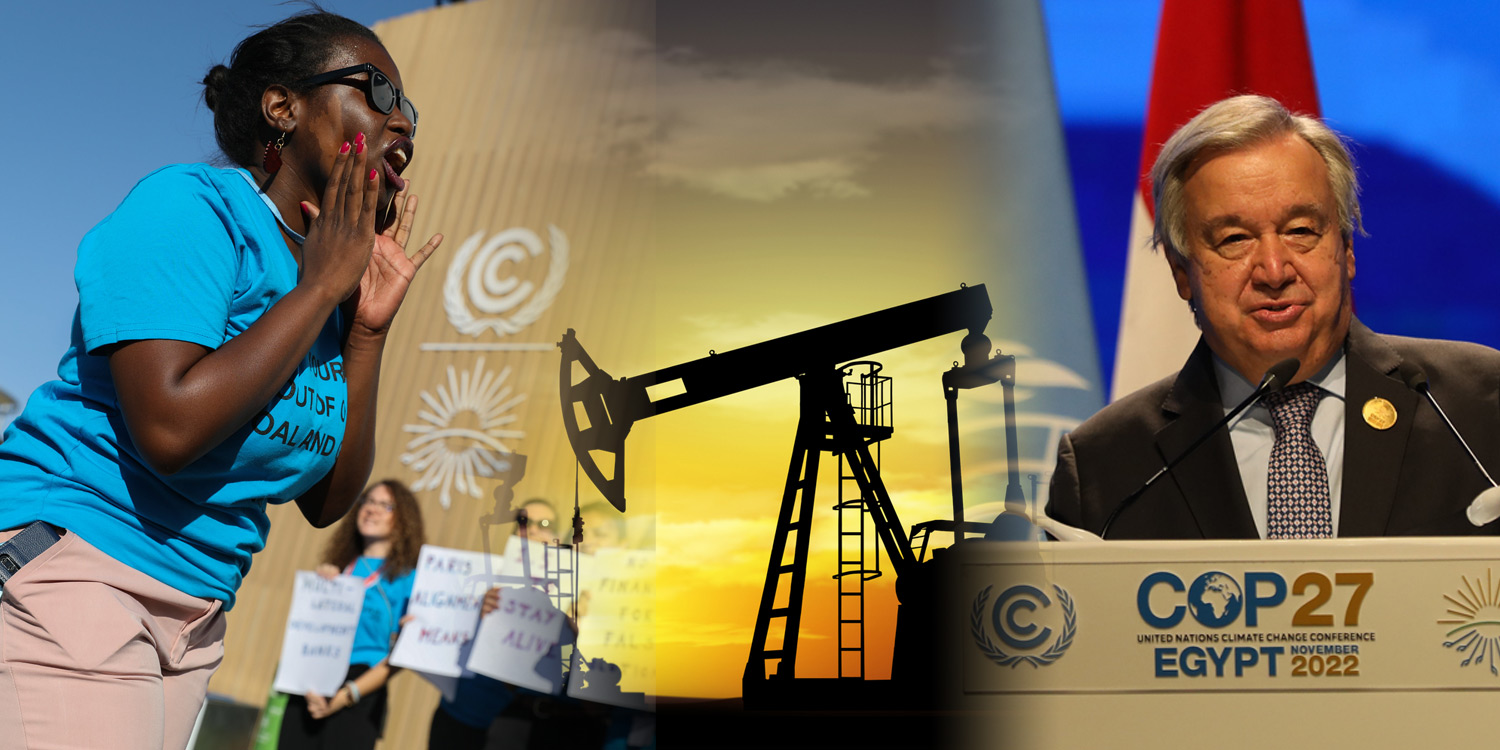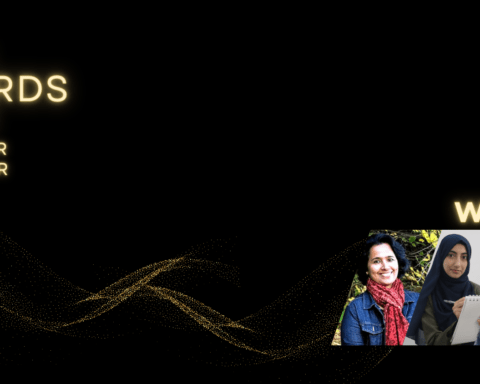This is the second in a two-part series examining the impacts of climate change on migration, in partnership with Ricochet. Read part one here.
Growing up in Ghana, Jamima Baada watched her community, including members of her own family, migrate from one region to another less impacted by climate change.
Now she teaches climate change and human migration at the University of British Columbia.
Baada, who immigrated to Canada for educational opportunities, is in a relatively privileged position compared to the rest of Ghana, where many are farmers still surviving on subsistence agriculture, and unable to move to Canada because of a lack of resources.
“The populations most impacted by climate change cannot afford airplane tickets,” Baada said. “And that is assuming that they’re able to go through the visa application process.”
Every minute, 41 people are displaced due to the climate crisis, according to a 2021 report from the Environmental Justice Foundation. What is Canada’s plan to welcome these migrants, now and in the decades to come?
A slow mass extinction
More and more people are increasingly displaced by the global climate crisis because their homelands are no longer habitable. As many as a billion people could be displaced and forced to migrate over the coming decades, driven from their homes and communities because of extreme weather events, conflict and extreme heat.
Global heating is slowly boiling the oceans, which is melting the ice and causing the world’s water to rise. As the sea level rises, several cities and even countries could disappear over the next few decades. According to a 2021 report from the International Organization for Migration, as many as 280 million people’s homelands could be submerged by the end of the century.
“No one is spared. No place in the world will be safe in the future,” said Caroline Dumas, the Special Envoy for Migration and Climate Action at the start of the United Nations Climate Change Conference, COP27, in Egypt.
“Hundreds of millions of people, especially children and women, are today facing an existential threat.”
There are two main drivers to climate-induced migration: Sudden onset, which refers to natural disasters, conflict, water and food shortages; and slow onset, such as land degradation, or desertification, and rising sea level, or ocean acidification, explains Rachel Bryce, co-chair of the Climate Migration Working Group for the Canadian Association of Refugee Lawyers.
We need to act proactively and plan for safe immigration pathways now, rather than when these people are basically stateless.”
Syed Hussan, executive director of the Migrant Workers Alliance for Change, says slow onset is generally overlooked even though it is one of the most important drivers of climate migration. “Climate change is still seen through a very Western lens, as almost exclusively floods or earthquakes, rather than what it is largely, which is a slow erosion.”
Deteriorating agriculture is a main driver of human migration, Hussan explains. Most of the Latin American workers in Canada are farmers who lived on subsistence agriculture back in their countries. Many were forced to migrate north through the continent because desertification has made the land unliveable, he said.
The impact of 150 years of greenhouse gas emissions
Baada says that countries throughout the Global South are disproportionately bearing the burden of climate change, even though rich countries in the Global North are the ones that created the problem in the first place. Global South countries are also the least equipped to cope with climate change because of the lack of development.
The long-term impact of underdevelopment has created the conditions where extreme weather events can be catastrophic, Hussan said. “Floods of a similar magnitude in Canada would not have resulted in millions of people being displaced.
“In Pakistan right now, 30 million people — almost the population of Canada — are displaced, because of floods. But if those kinds of floods had happened in Canada, you would not see the entire country displaced.”
Federal NDP immigration critic Jenny Kwan said Canada has a responsibility to increase the number of accepted refugees and asylum-seekers. “Instead,” she said, pointing to new numbers released this month, “the government is reducing the numbers, so it’s going in the opposite direction.”
Sean Fraser, Canada’s immigration minister, declined requests for an interview.
“The work of lowering emissions and transitioning the energy sector must happen while supporting communities on the frontlines,” Kwan said. “[These changes] have to happen simultaneously because people are being displaced right now.”
A historic fund for losses and damages
Coming out of COP27, Kwan says she is not seeing the urgency from the Canadian government that is required on this issue. In addition to pushing to end oil and gas subsidies immediately, and to stop pursuing pipeline expansion, Kwan says the NDP is demanding the government sign on to an environmental bill of rights — for people and nature.
“We need public accountability, truth be told,” she said. “We can’t trust the government on this issue. They say nice words, but they don’t match that with action. We need independent oversight with regard to climate action.”
What that means for Canada is making significant financial contributions to a fund for countries experiencing the ravages of the crisis right now.
“We must respond to what is happening in the global community,” Kwan says. “Climate migration is already happening. People are already dying as a result of it.
We all have to step up. Canada can do more on the refugee and settlement side, and also in the international community. It’s absolutely critical that Canada invest in mitigation efforts in other countries as well.”
At this year’s global climate talks, adaptation and mitigation efforts, as well as loss and damage funding for countries in the Global South, were a central piece of the negotiations.
At the eleventh hour, a deal was reached to provide funding for vulnerable countries hit hard by climate disasters, overcoming years of resistance from rich nations who contribute the bulk of the world’s emissions.
The agreement calls for a committee with representatives from 24 countries to work over the next year to figure out exactly what form the fund should take; which countries and financial institutions should contribute; and where the money should go. Many of the other details are still to be determined. Importantly, the agreement makes clear that payments are not to be seen as an admission of liability.
While establishment of a new international fund for loss and damage is a historical breakthrough, activists say COP27 ultimately failed to achieve any consensus for a phase-out of fossil fuels. Many hoped Canada would announce an end to fossil fuel expansion, a cap on oil and gas emissions, and a windfall tax on oil and gas profits, none of which happened.
“When COP27 ends, the Canadian public will want to know: Did Canada’s contribution help ensure a safe future? Or did we add to the delay on climate action, which will be measured in lives,” said Julia Levin, national climate program manager for Environmental Defence.
“Canada must stop bowing to fossil fuel lobbyists and putting the interests of a small number of wealthy individuals ahead of all Canadians — and indeed the entire global community.”
Redefining the legal definition of refugee
Canada’s current legal definition of a refugee doesn’t include those who are forced to flee their countries because of climate change. Bryce, of the Canadian Association of Refugee Lawyers (CARL) said that needs to change.
Like most countries, Canada’s definition of a refugee is based on the Convention Relating to the Status of Refugees text written in 1951 in the aftermath of the Second World War and the Nazi persecution of Jews and others.
The legal definition of a refugee is therefore very specific to this period and only concerns someone “unable or unwilling to return to their country of origin owing to a well-founded fear of being persecuted for reasons of race, religion, nationality, membership of a particular social group, or political opinion.”
The only scenario in which someone affected by climate change could receive refugee status is if “the effects of climate change cause instability, and the state is unable or unwilling to provide protection against some aspects of persecution that resulted,” Bryce said.
Climate migrants might also be able to seek permanent residency through “humanitarian and compassionate” grounds, but those considerations are exceptional and rarely granted, she adds.
A 2021 report from the refugee lawyers association, suggests a number of ways Canada could modernize its policies to include climate-induced displacement. For example, climate migrants could be added to Canada’s legal definition of a refugee.
Guidelines could also be created to tell officers reviewing humanitarian and compassionate considerations to look specifically into climate risks. A third suggestion is providing “climate visas” following the example of Argentina, which recently introduced a three-year visa for people displaced by natural disasters.
But these are only temporary measures created to assist in response to specific events, Bryce said. It does not help those affected by slow onset climate change.
Climate migrants might also come through regular pathways, such as study and work permits, and family sponsorship. But CARL believes these policies are not enough “to contend with the growing scale of climate migrants,” Bryce said. In addition, she said it disadvantages those most vulnerable to climate change — the people who don’t have enough resources to immigrate.
However, for Hussan of the Migrant Workers Alliance for Change, changing definitions on paper “are not real solutions; they are tinkering. They don’t actually deal with the scale and scope of the crisis.”
He said changing definitions also doesn’t address Canada’s responsibility and accountability for its disproportionate damage throughout its 150-year history. Canada is among the 10 top worst polluters in the world, and greenhouse gas emissions continue to rise.
At the same time, the Canadian government and industry are planning to expand oil and gas production well past 2050, the year the government has previously committed to achieving “net-zero” emissions.
“In terms of Canada’s moral responsibility, this country needs to stop pumping carbon into the atmosphere, stop paying subsidies [to fossil fuel companies], and not depend on false hopes like carbon capture technology,” Hussan said.
“Climate debt isn’t just money.”

Daphné Dossios
Daphné started her journalism journey in Switzerland, after graduating with a Bachelor in Political Science. She then decided to immigrate to Vancouver – unceded territories of the Musqueam, Squamish and Tsleil-Waututh Nations. Before contributing to the New Canadian Media, Daphné was a frequent writer for the bilingual newspaper The/La Source. An avid learner, Daphné was recently selected for a Master's degree in Journalism at the University of British Columbia which she will begin in September 2022. Daphné is particularly interested in social justice stories, especially regarding refugees, and Indigenous and 2LGBTQ+ communities.




